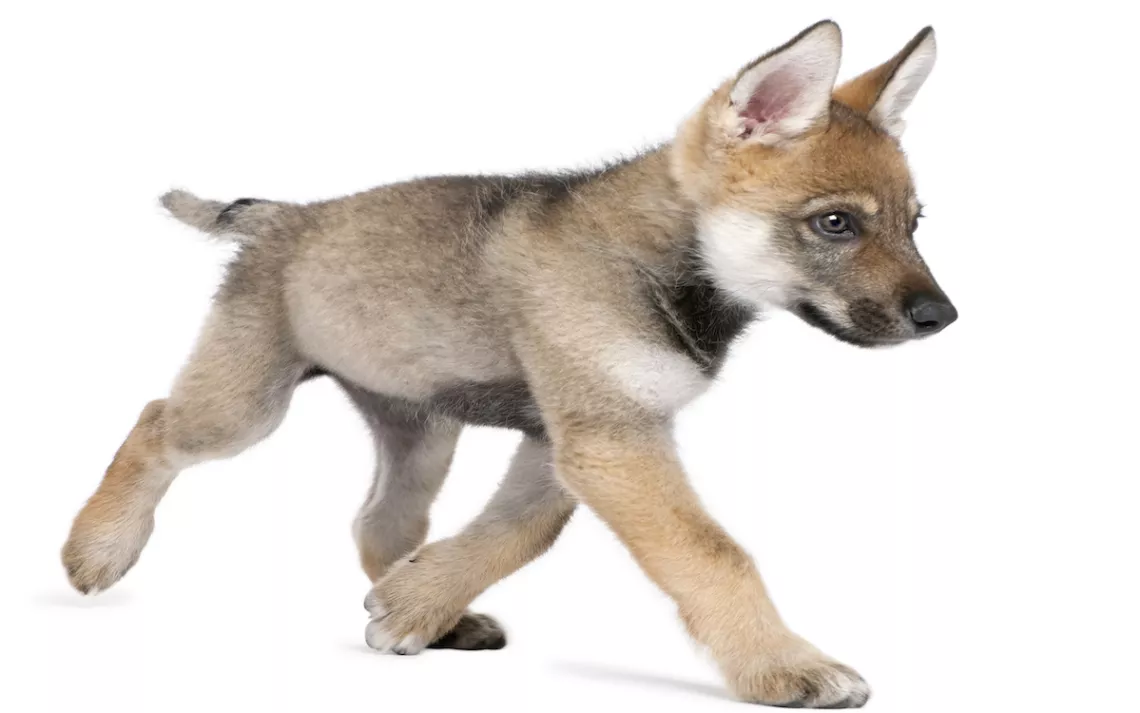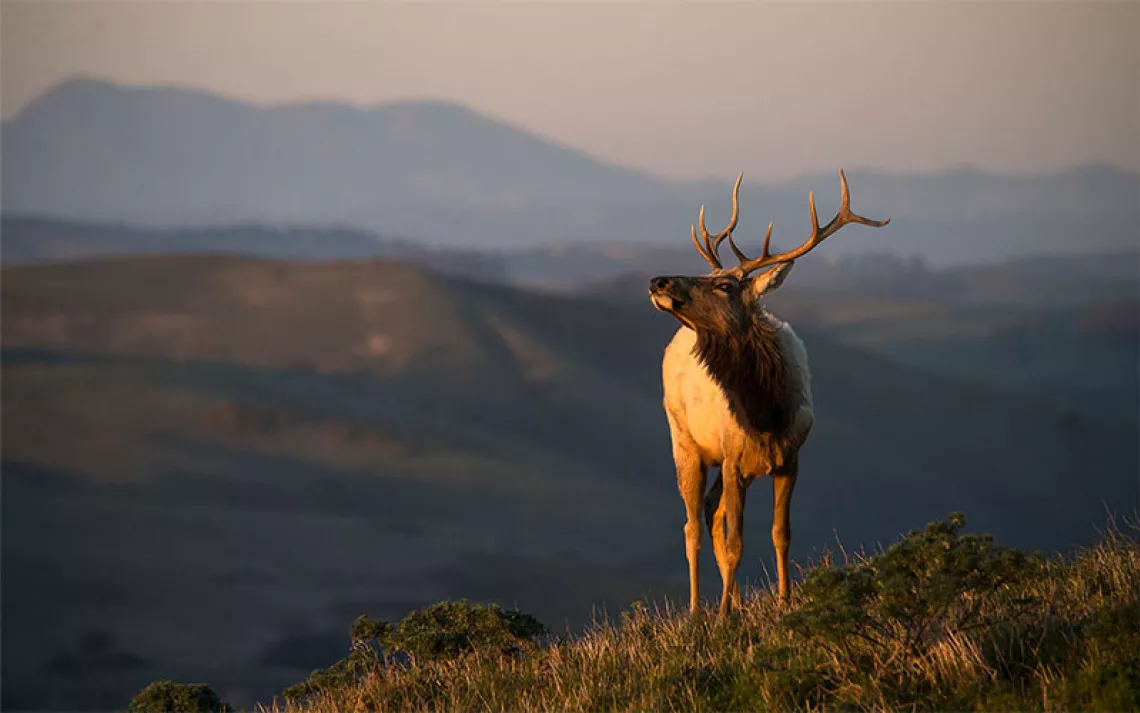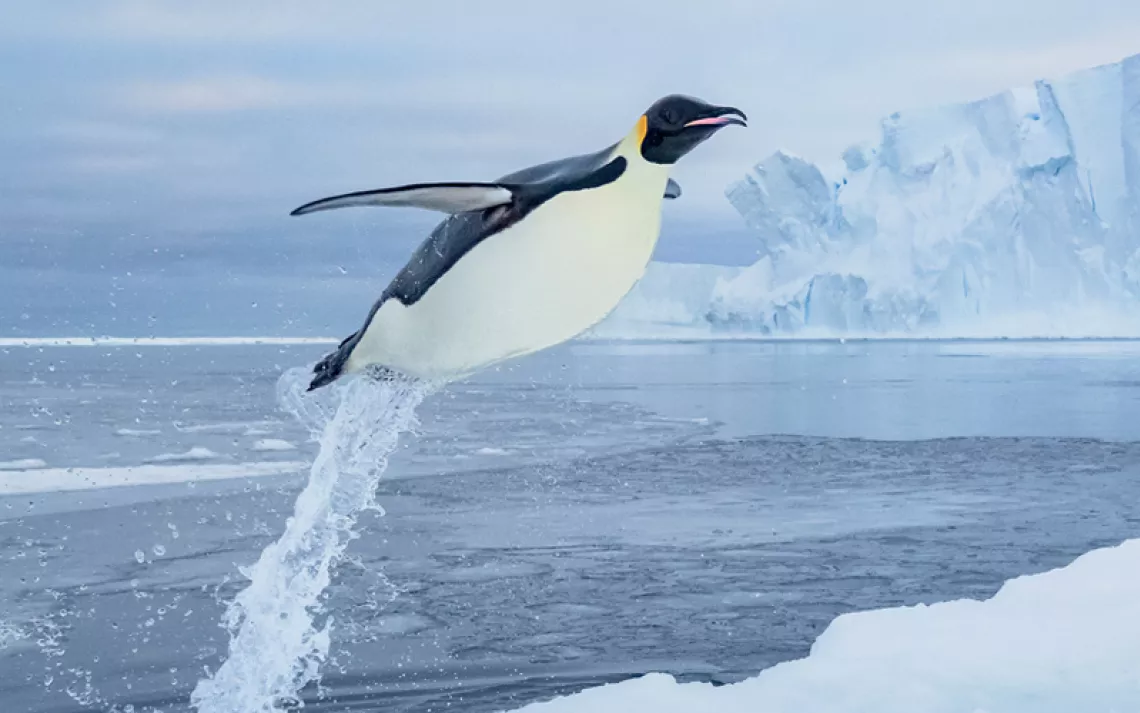You Know About Wolf-Dogs—But What About the Dog-Wolves?
Many Eurasian wolves are hybrids, raising questions about their conservation

Photo by GlobalP/iStock
It’s common knowledge that wolves and dogs can crossbreed, and have for a long time. The results are new pets such as wolf-dogs, but also hybrids that stay wild within wolf populations. The latter sort of cross breeding turns out to be far more prevalent than previously thought, especially in Eurasian wolf populations. This brings up hard questions about their protection. Here in the United States, the Endangered Species Act covers all species listed in the U.S., including subspecies and (for vertebrates) even distinct population segments, but it’s silent regarding hybrids.
A new study in the journal Evolutionary Applications shows that hybrids between wolves and domestic dogs affect wild wolf populations on a scale larger than estimated just a few years ago. An international team of scientists, including Małgorzata Pilot at the University of Lincoln in the United Kingdom, has recorded several kinds of crossbreeding by identifying specific genetic indicators. They found admixture taking place very recently—within a few current generations—as well as in pre-Columbian times, 1,500 to 7,000 years ago.

Sign up to receive Sierra News & Views
Get articles like this one sent directly to your inbox weekly.
With this action you affirm you want to receive Sierra Club communications and may vote on policy designated by the Sierra Club Board.
“The [Eurasian] mixture is more intense compared to North America,” said Pilot. “Wolves are reproducing with hybrids too, creating a backcross. They could have a dog as a grandparent or great-grandparent.”
The findings could have important conservation implications regarding the protection of wolves. Europe, like the United States, lacks regulations for hybrids. The problem is compounded by the fact that many wildlife managers identify—often erroneously—individual wolves as hybrids based on how they appear.
“Canines, both wild and domestic, can range in variation and diversity so that relying purely on general features such as color or nails or ‘look’ can often be quite deceiving, unless backed up with loads of genetic data,” said Bridgett M. vonHoldt, a co-author of the study and a scientist at Princeton University.
For example, black fur is common in North American wolves—a trait frequently used in the past as evidence of hybridization—and is starting to become more apparent in Eurasian wolves with varying degrees of hybridization. But black fur doesn’t necessarily indicate a hybrid, and genetically “pure” wolves may also have black fur. So managing black wolves as hybrids, said vonHoldt, “is only self-serving for those who want to reduce wolf numbers. There are very few traits, if any, that indicate that an individual is a hybrid outside of genetics.”
Therein lies the problem. It’s been difficult for wildlife managers and conservationists to come up with a robust conservation program that includes hybrids. And the absence of clear policies and regulations for determining which wolves are hybrids opens the door for hunters to claim that they didn’t believe individual animals were protected. (It has also led wildlife management programs to allow the killing of hybrids to protect wild populations.)
“There is little consensus on the extent to which hybrids between endangered and non-endangered species should be protected by U.S. law,” wrote Robert K. Wayne, a geneticist at UCLA (and co-author of the Evolutionary Applications study) in Molecular Ecology in 2016. “As increasingly larger, genome-scale data sets are developed, we can identify individuals and populations with even trace levels of genetic admixture, making the ‘hybrid problem’ all the more difficult.”
Wayne identified two concerns in particular: Identifying hybrids is empirically difficult, requiring the costly and time-consuming capture and genetic testing of wild wolf populations. Also, when wolf ancestry is known, the question of what degree of hybridization in individuals and populations should be protected remains unresolved. Neither Defenders of Wildlife nor the International Wolf Center include hybrids in their conservation efforts.
“You have an animal that has a foot in two worlds,” said Nancy Gibson, a naturalist and a member of the Board of Directors of the International Wolf Center, “It’s asking a lot.”
 The Magazine of The Sierra Club
The Magazine of The Sierra Club



